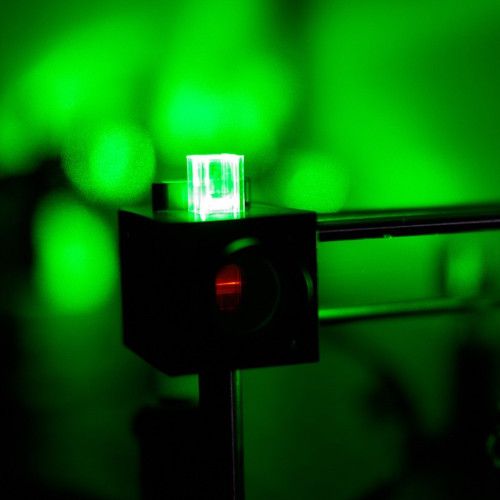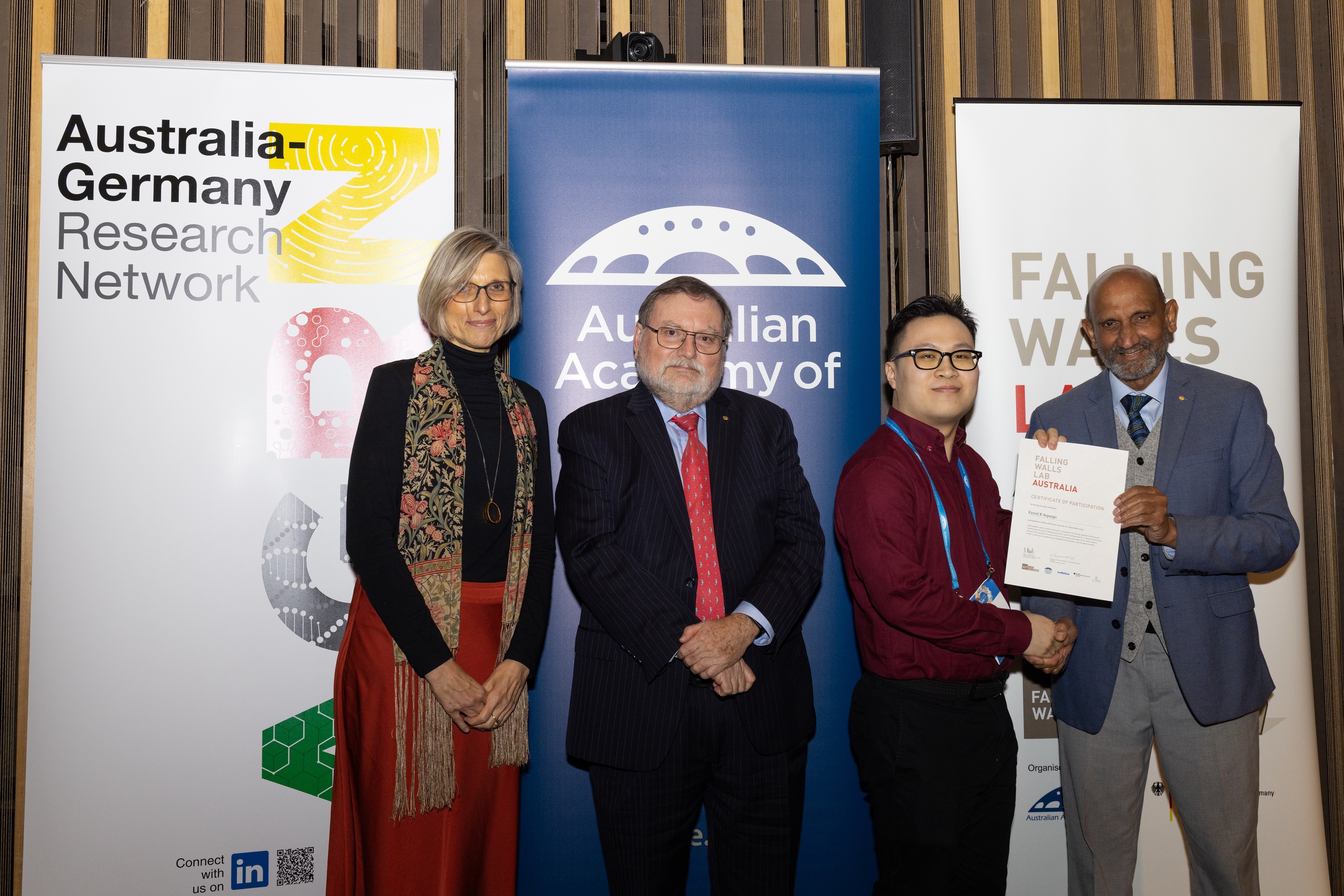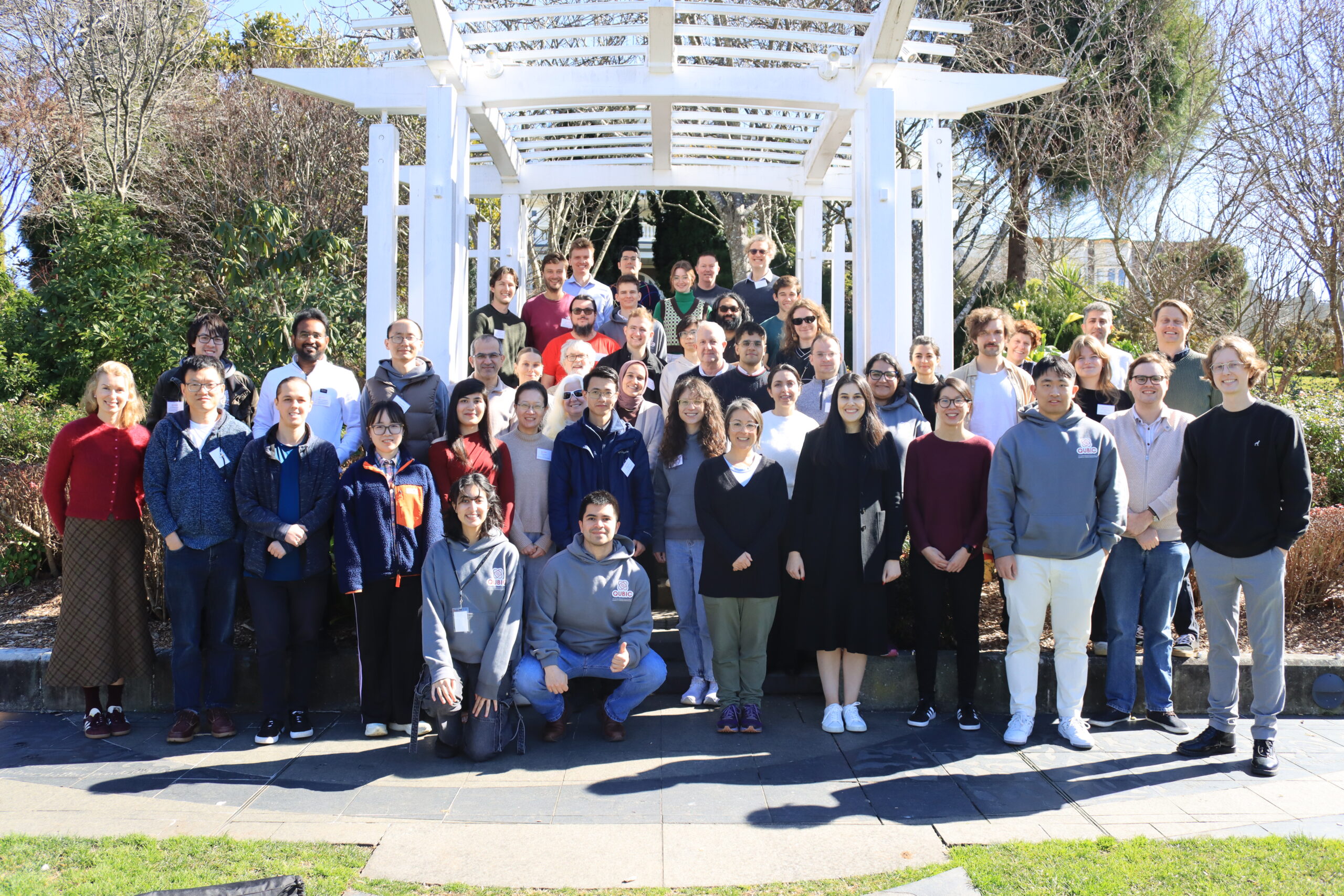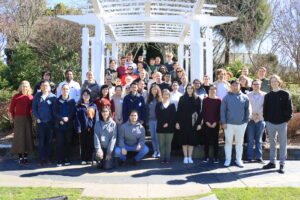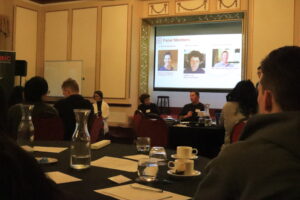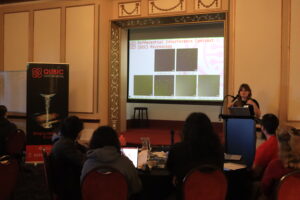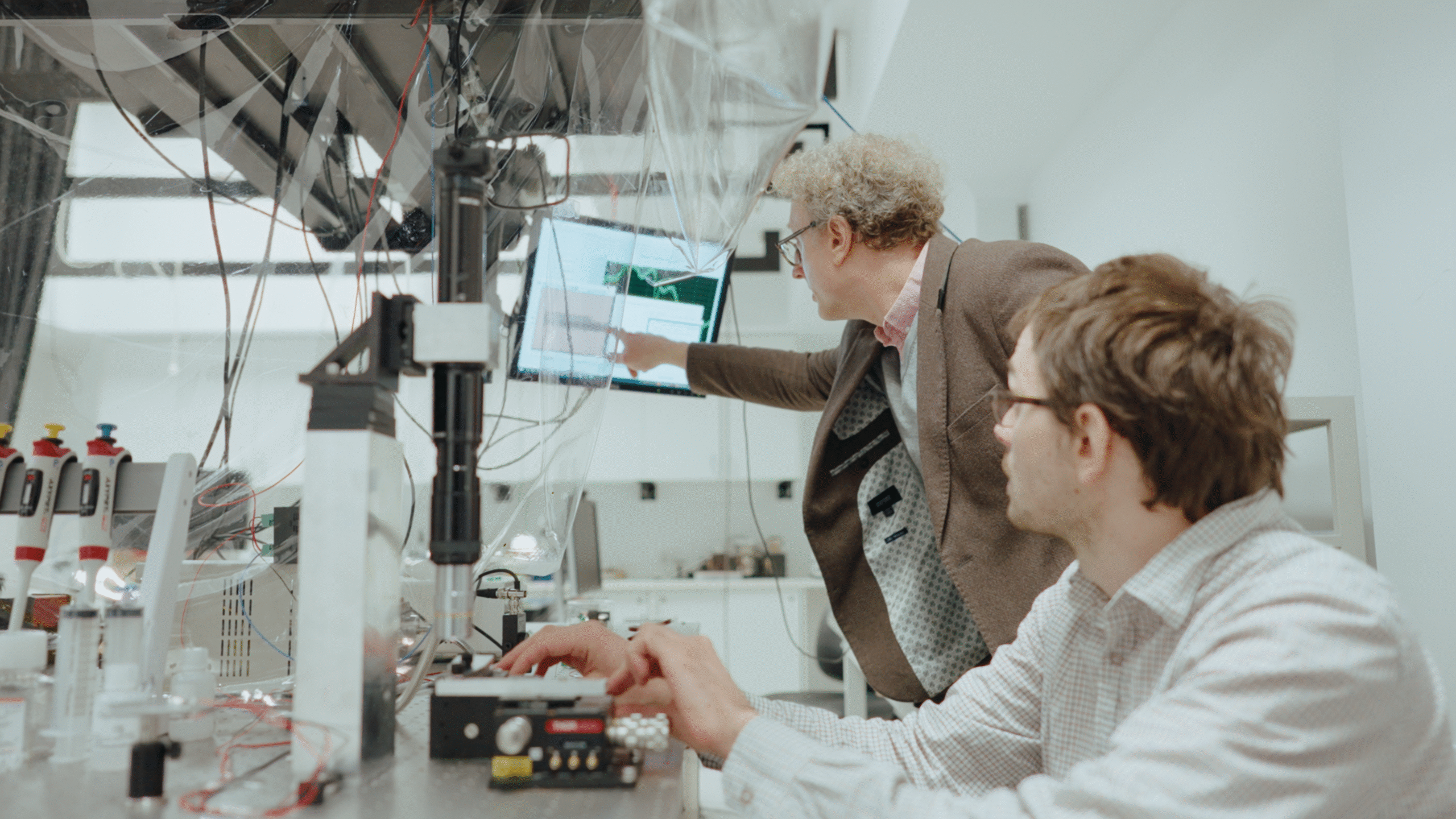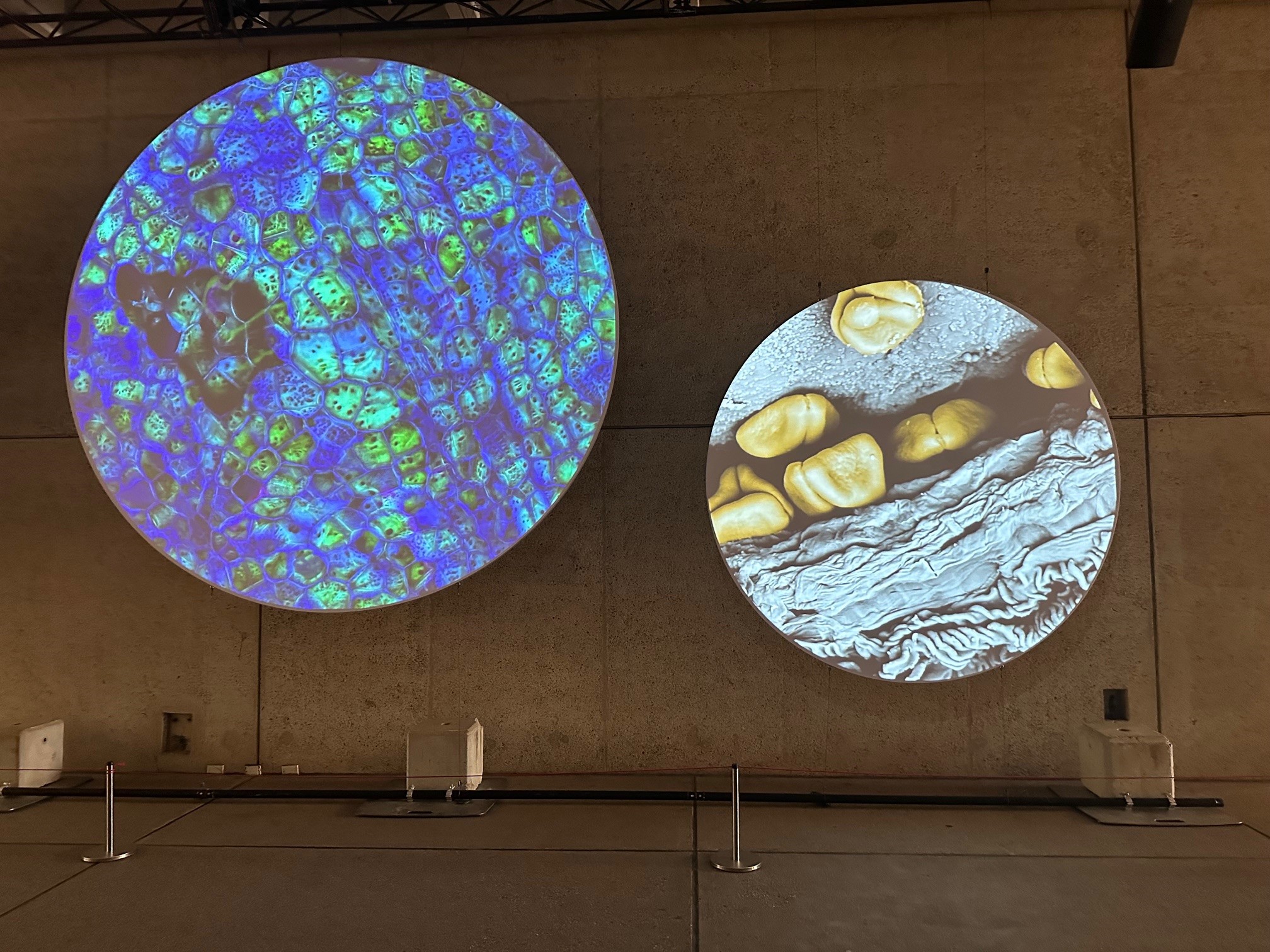Congratulations to everyone who was nominated and to the winners of QUBIC’s inaugural awards! At the QUBIC Annual Symposium, we were proud to honour the incredible people and teams whose work has shaped our Centre in 2025.
These awards recognise excellence across research, collaboration, engagement, and leadership because QUBIC’s success is built on the passion and commitment of its people. From groundbreaking science to inspiring outreach, these achievements reflect the spirit of innovation and collaboration that drives our mission to bring quantum to life.
Our 2025 Award Winners
🌟 Scientific Achievement – Brain Theme
Dr Dzung Do-Ha and Dr Dan McCloskey
For establishing and using a diamond voltage imaging microscope (DVIM) system, to image the electrical activity of neurons as well as characterise subcellular structures relevant to neurodegenerative diseases including MND. Their collaborative work has enabled the first single-shot, label free images of neuronal activity – a major step forward for QUBIC’s Brain Theme.
🌟 Scientific Achievement – Molecule Theme
Dr Martin Stroet
For developing and maintaining the Automated Topology Builder (ATB), a global resource used by thousands of researchers and paving the way for quantum approaches in molecular modeling and drug discovery.
🌟 Scientific Achievement – Cell Theme
Dr Nicolas Mauranyapin
For developing a quantum-limited microscope that images living cell activity, opening new possibilities for drug development, cancer diagnostics, and antibiotic resistance testing.
🌟 Ambassador Award
Dr Pavlina Naydenova
For raising QUBIC’s profile through exceptional leadership in outreach and engagement—connecting quantum biotechnology with schools, industry, and government, and inspiring the next generation of quantum thinkers.
🌟 Rising Star Award
Dr Dzung Do-Ha
For advancing QUBIC’s vision by bridging quantum sensing with neurodegenerative research
🌟 Superstars of Outreach Award
Hunter Johnson, Shikun Ma and Dhilan Vallury
For their contribution to the 2025 National Quantum & Dark Matter Road Trip sideshow, designing new activities and delivering 20 demonstrations to over 500 students with exceptional enthusiasm and commitment to promoting science.
🌟 Advancing Equity Award
Dr Mahya Mohammadi
For advancing equity in science through mentoring under-represented students, international representation, and outreach, applying skills from the Elevating Quantum Women’s Voices program to strengthen QUBIC’s culture of inclusion.
🌟 Outstanding Collaborative Paper
Qiang Zhu, Zahra Raza, Dzung Do-Ha, Emma De Costa, Pavlina Sasheva, Luke McAlary, Hadi Mahmodi, Warwick P. Bowen, Lezanne Ooi, Irina Kabakova, Haibo Yu
For publishing a collaborative paper in Advanced Materials that unites three QUBIC nodes and all research themes: Biomolecular Condensates as Emerging Biomaterials: Functional Mechanisms and Advances in Computational and Experimental Approaches.
🌟 Outstanding Team Project
The Mentoring, Training & Development Portfolio Team
For delivering exceptional initiatives in 2025 including QUBIC’s flagship programs – Winter School, UG Summer Internship, and mentoring opportunities that strengthened QUBIC’s culture and amplified its impact.
🌟 Cross-Nodal Collaboration Award
Emma De Costa
For exceptional leadership in fostering cross-theme collaboration, driving multi-node initiatives and building strong connections across teams for their work in TDP-43
🌟 Research Translation Pioneer Award
Prof Alexander Solnstev and the CTCP Project Team
For advancing QUBIC’s work in next-generation quantum spectroscopy diagnostic platforms for heart disease
🌟 Mentor Award
Prof Allison Fish
For creating a truly participatory, inclusive and supportive environment for QUBIC members, where individuals feel heard and valued.
🌟 Director’s Award
Prof Lezanne Ooi
For exceptional leadership as QUBIC’s Brain Theme Lead, driving collaboration and innovation across nodes, integrating quantum science with biomedical applications, and strengthening QUBIC’s culture through mentorship and inclusion.
Why these awards matter
The QUBIC Awards celebrate more than achievements, they recognise the people who make our mission possible. Every winner and nominee has contributed to advancing quantum biotechnology, building collaborations, and shaping conversations that will define the future of science and technology.
Thank you to everyone who contributed to QUBIC’s success in 2025. We can’t wait to see what we achieve together in the year ahead!
Top image: QUBIC’s Mentoring, Training & Development Portfolio Team accepting the award for Outstanding Team Project


